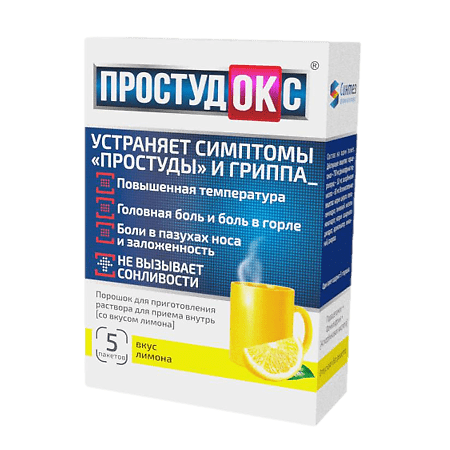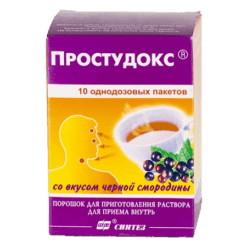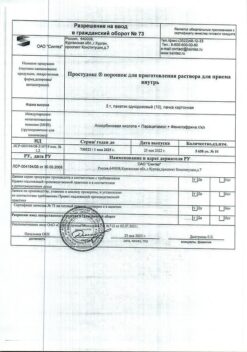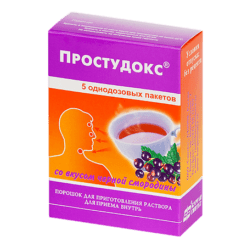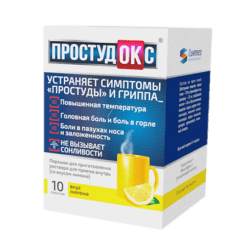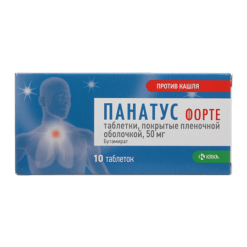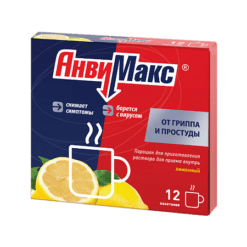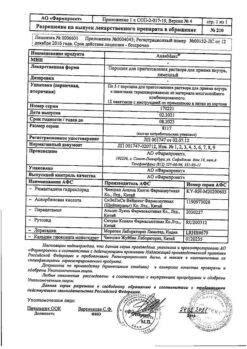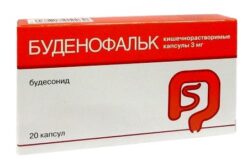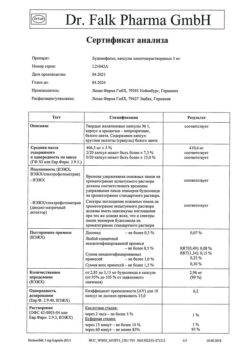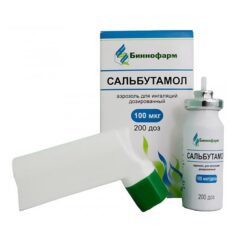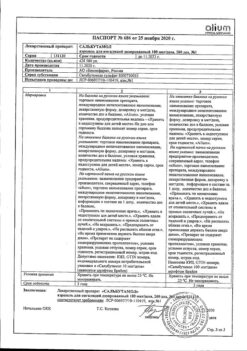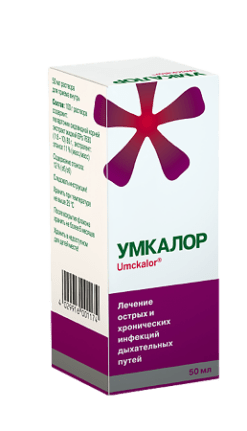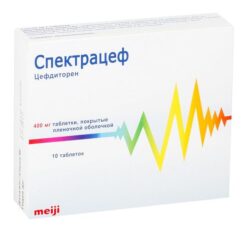No products in the cart.
Prostudox lemon, 5 g 5 pcs
€1.00
Out of stock
(E-mail when Stock is available)
Description
Pharmacotherapeutic group:Anallergic and “cold” remedy (analgesic non-narcotic + alpha-adrenomimetic + vitamin).
ATX code: N02BE51
Pharmacological properties
A combined remedy, the action of which is due to its constituent components.
Pharmacodynamics
Paracetamol is an analgesic and antipyretic. Its mechanism of action is thought to be the inhibition of prostaglandin synthesis, mainly in the central nervous system.
It has practically no effect on the synthesis of prostaglandins in the peripheral tissues, does not change the water-electrolyte metabolism and does not damage the mucous membrane of the gastro-intestinal tract. This property of paracetamol makes the drug particularly suitable for patients with a history of gastrointestinal diseases (e.g., patients with a history of gastrointestinal bleeding or elderly patients) or patients taking concomitant medication in which inhibition of peripheral prostaglandin synthesis may be undesirable.
Phenylephrine hydrochloride is a sympathomimetic agent aimed at stimulation of adrenoreceptors (mainly α-adrenoreceptors), which leads to reduction of nasal mucosal edema and facilitation of nasal breathing.
Ascorbic acid (vitamin C) replenishes the increased need for vitamin C during “colds” and flu, especially at the initial stages of the disease. The ingredients do not cause drowsiness or impair concentration.
Pharmacokinetics
Absorption and distribution
The absorption of paracetamol in the gastrointestinal tract is high. Time to reach maximum plasma concentration is 0.5-2 hours; maximum plasma concentration is 5-20 µg/ml. Binding with plasma proteins is 15%. It penetrates through the blood-brain barrier.
Phenylephrine hydrochloride is unevenly absorbed from the gastrointestinal tract. Maximum plasma concentrations are reached between 45 min and 2 h. There are no data on distribution.
Ascorbic acid is quickly absorbed from the gastrointestinal tract and distributed throughout the body. The binding to plasma proteins is 25%.
Metabolism
Paracetamol is metabolized mainly in the liver. 90-95 % by three main pathways: 80% undergo conjugation reactions with glucuronic acid and sulfates to form inactive metabolites; 17% undergo hydroxylation to form 8 active metabolites, which conjugate with glutathione to form already inactive metabolites. In case of glutathione deficiency these metabolites can block enzyme systems of hepatocytes and cause their necrosis. The CYP2E1 isoenzyme is also involved in metabolism of the drug.
Phenylephrine hydrochloride undergoes primary metabolism by monoamine oxidases in the intestine and liver. Thus, the bioavailability of phenylephrine is reduced with oral administration.
There are no data on ascorbic acid metabolism.
Elimation
Paracetamol is excreted by the kidneys as metabolites, mainly glucuronide and sulfate conjugates, less than 5% is excreted unchanged. The elimination half-life is 1-4 hours. In elderly patients the drug clearance is decreased and the half-life is prolonged, but no dose adjustment is required. Phenylephrine hydrochloride is excreted by the kidneys almost completely in the form of sulfate conjugates. The elimination period is 2-3 hours.
When administered in doses that exceed the body’s need for ascorbic acid, ascorbic acid is excreted by the kidneys as metabolites.
Indications
Indications
The drug is used as a temporary remedy to relieve cold and flu symptoms, including:
– elevated temperature;
– headache;
– chills;
– pain in joints and muscles;
– pain in the sinuses and congestion;
– sore throat.
Pharmacological effect
Pharmacological effect
Pharmacotherapeutic group: a remedy for eliminating the symptoms of acute respiratory infections and “colds” (analgesic non-narcotic drug + alpha-adrenergic agonist + vitamin).
ATX code: N02BE51
Pharmacological properties
A combined product whose effect is determined by its constituent components.
Pharmacodynamics
Paracetamol is an analgesic and antipyretic. Its mechanism of action is believed to be the suppression of prostaglandin synthesis, primarily in the central nervous system.
It has virtually no effect on the synthesis of prostaglandins in peripheral tissues, does not change water-electrolyte metabolism and does not damage the mucous membrane of the gastrointestinal tract. This property of paracetamol makes the drug particularly suitable for patients with a history of gastrointestinal disease (for example, patients with a history of gastrointestinal bleeding or elderly patients) or patients taking concomitant medications in which suppression of peripheral prostaglandin synthesis may be undesirable.
Phenylephrine hydrochloride is a sympathomimetic agent, the action of which is aimed at stimulating adrenergic receptors (mainly α-adrenergic receptors), which leads to a reduction in swelling of the nasal mucosa and easier nasal breathing.
Ascorbic acid (vitamin C) replenishes the increased need for vitamin C during colds and flu, especially in the initial stages of the disease. The components included in the drug do not cause drowsiness and do not interfere with concentration.
Pharmacokinetics
Suction and distribution
Absorption of paracetamol in the gastrointestinal tract is high. The time to reach maximum plasma concentration is 0.5-2 hours; maximum plasma concentration is 5-20 mcg/ml. Connection with blood plasma proteins – 15%. Penetrates the blood-brain barrier.
Phenylephrine hydrochloride is unevenly absorbed from the gastrointestinal tract. The maximum plasma concentration is achieved in the range from 45 minutes to 2 hours. Data on distribution are not available.
Ascorbic acid is quickly absorbed from the gastrointestinal tract and distributed throughout the body. The connection with blood plasma proteins is 25%.
Metabolism
Paracetamol is metabolized primarily in the liver. 90-95% in three main ways: 80% enter into conjugation reactions with glucuronic acid and sulfates to form inactive metabolites; 17% undergo hydroxylation to form 8 active metabolites, which conjugate with glutathione to form inactive metabolites. With a lack of glutathione, these metabolites can block the enzyme systems of hepatocytes and cause their necrosis. The CYP2E1 isoenzyme is also involved in the metabolism of the drug.
Phenylephrine hydrochloride undergoes primary metabolism by monoamine oxidases in the intestine and liver. Thus, when administered orally, the bioavailability of phenylephrine is reduced.
There are no data on the metabolism of ascorbic acid.
Removal
Paracetamol is excreted by the kidneys in the form of metabolites, mainly glucuronide and sulfate conjugates, less than 5% is excreted unchanged. The half-life is 1-4 hours. In elderly patients, the clearance of the drug decreases and the half-life increases, but no dose adjustment is required. Phenylephrine hydrochloride is excreted almost entirely by the kidneys in the form of sulfate conjugates. The elimination period is 2-3 hours.
When used in doses exceeding the body’s needs for ascorbic acid, ascorbic acid is excreted by the kidneys in the form of metabolites.
Special instructions
Special instructions
If no improvement is observed while taking the drug or the first signs of an overdose appear, even in the absence of clear symptoms of poisoning, you should immediately consult a doctor.
The drug contains paracetamol, it should not be taken simultaneously with other paracetamol-containing drugs, as well as non-narcotic analgesics, NSAIDs (metamizole sodium, acetylsalicylic acid, ibuprofen, etc.), drugs to eliminate the symptoms of colds and flu, sympathomimetics (decongestants, appetite regulating drugs, amphetamine-like psychostimulants), barbiturates, antiepileptic drugs, rifampicin, chloramphenicol.
To avoid toxic liver damage, the drug should not be combined with ethanol-containing drugs and drinks, or taken by people prone to chronic alcohol consumption.
Concomitant liver disease increases the risk of further liver damage while taking the drug. When taking the drug in patients with non-alcoholic cirrhosis of the liver, there is a high risk of overdose.
When conducting tests to determine uric acid and blood glucose levels, tell your doctor about the use of the drug Prostudox®, as the drug may distort the results of laboratory tests that assess the concentration of glucose and uric acid.
Patients with glutathione deficiency due to an eating disorder, cystic fibrosis, HIV infection, fasting, malnutrition are susceptible to overdose, so precautions must be taken and it is recommended to consult a doctor before taking the drug. Cases of liver failure/impaired liver function have been reported with a small overdose of paracetamol (5 g or more) in patients with low glutathione levels, in particular in extremely malnourished patients suffering from anorexia, chronic alcoholism, in patients with a low body mass index or sepsis.
Use of the drug in patients with low levels of glutathione, for example, with sepsis, may increase the risk of developing metabolic acidosis, accompanied by symptoms of rapid, difficult breathing (feeling short of air, shortness of breath), nausea, vomiting, loss of appetite. If these symptoms occur simultaneously, you should immediately consult a doctor.
Before taking Prostudox®, you should consult your doctor if:
– if you are taking warfarin or other indirect anticoagulants to thin your blood;
– if you are taking metoclopramide, domperidone (usually used to relieve nausea and vomiting) or cholestyramine, used to lower blood cholesterol levels;
– if you are on a low sodium diet.
Impact on the ability to drive vehicles and machinery
The drug may cause dizziness. If dizziness occurs, it is not recommended to drive vehicles or operate machinery.
Active ingredient
Active ingredient
Paracetamol, Phenylephrine, [Ascorbic Acid]
Composition
Composition
Active ingredients:
paracetamol – 750 mg,
phenylephrine hydrochloride – 10 mg,
ascorbic acid – 60 mg.
Excipients: sodium citrate pentahemihydrate (sodium citrate 5.5-aqueous), citric acid monohydrate, sodium saccharinate dihydrate, lemon flavor (lemon food powder flavor), sucrose.
Pregnancy
Pregnancy
The use of the drug during pregnancy and breastfeeding is contraindicated.
Contraindications
Contraindications
– hypersensitivity to paracetamol, phenylephrine, ascorbic acid (vitamin C) or any other component of the drug;
– severe liver and kidney dysfunction;
– hyperthyroidism (including thyrotoxicosis);
– diabetes mellitus and sucrase/isomaltase deficiency, with a rare hereditary disorder in the form of fructose intolerance, glucose-galactose malabsorption, because the drug contains sucrose;
– deficiency of glucose-6-phosphate dehydrogenase;
– heart disease (with severe stenosis of the aortic mouth, acute myocardial infarction, tachyarrhythmia);
– arterial hypertension;
– simultaneous use of tricyclic antidepressants, beta-blockers, monoamine oxidase inhibitors (MAOIs), incl. within a period of up to 14 days after their cancellation;
– simultaneous use of other paracetamol-containing drugs, decongestants, non-narcotic analgesics, non-steroidal anti-inflammatory drugs, drugs to relieve the symptoms of colds, flu and nasal congestion, drugs that regulate appetite, amphetamine-like psychostimulants, barbiturates, antiepileptic drugs, rifampicin, chloramphenicol (see section “Interaction with other drugs”);
– simultaneous intake of ethanol-containing drinks and medications;
– chronic alcoholism;
– prostatic hyperplasia;
– angle-closure glaucoma;
– pregnancy and breastfeeding;
– age up to 12 years.
With caution
If you have one of the following diseases/conditions/risk factors, be sure to consult your doctor before taking the drug:
– benign hyperbilirubinemia;
– impaired liver and kidney function of mild to moderate severity;
– alcoholic liver disease;
– stenosing ulcer of the stomach and/or duodenum;
– prostate diseases and urinary problems;
– cardiovascular diseases, including high blood pressure, obliterating vascular diseases (Raynaud’s syndrome);
– pheochromocytoma;
– presence of severe infections, because taking the drug may increase the risk of metabolic acidosis;
– glutathione deficiency (in particular in extremely malnourished patients suffering from anorexia, chronic alcoholism or patients with a low body mass index);
– simultaneous use of digoxin and cardiac glycosides, ergot alkaloids (for example, ergotamine or methysergide).
Side Effects
Side Effects
At recommended doses, the drug is usually well tolerated.
The following adverse reactions were detected spontaneously during post-registration use of the drug.
Adverse reactions are classified according to body systems and according to the frequency of development. The frequency of adverse reactions is determined as follows: very often (≥1/10), often (≥1/100 and <1/10), infrequently (≥1/1000 and <1/100), rarely (≥1/10,000 and <1/1000), very rarely (<10,000), frequency unknown (frequency cannot be estimated based on the available data).
Paracetamol
Paracetamol rarely has side effects.
Blood and lymphatic system disorders
Very rare: thrombocytopenia, leukopenia, agranulocytosis.
Immune system disorders
Very rare: anaphylactic shock, skin hypersensitivity reactions including, but not limited to, skin rash, urticaria, angioedema (Quincke’s edema), Stevens-Johnson syndrome, toxic epidermal necrolysis.
Respiratory, thoracic and mediastinal disorders
Very rare: bronchospasm in patients with hypersensitivity to acetylsalicylic acid and other non-steroidal anti-inflammatory drugs.
Disorders of the liver and biliary tract
Very rare: liver dysfunction.
Renal and urinary tract disorders
With long-term use of the drug in doses exceeding the recommended one, the likelihood of nephrotoxicity increases.
Phenylephrine
Immune system disorders
Rarely: hypersensitivity reactions, urticaria, allergic dermatitis.
Mental disorders
Common: nervousness
Nervous system disorders
Common: headache, dizziness, insomnia.
Visual disorders
Rare: mydriasis, acute attack of glaucoma in most cases in patients with angle-closure glaucoma.
Cardiovascular disorders
Common: increased blood pressure.
Rarely: tachycardia, a feeling of palpitations that goes away immediately after discontinuation of the drug.
Gastrointestinal disorders
Common: nausea, vomiting.
Skin and subcutaneous tissue disorders
Very rare: rash.
Renal and urinary tract disorders
Rarely: dysuria, urinary retention in patients with bladder outlet obstruction due to prostatic hypertrophy.
Ascorbic acid
Blood and lymphatic system disorders
Frequency unknown: thrombocytosis, hyperprothrombinemia, erythropenia, neutrophilic leukocytosis, hypokalemia.
Immune system disorders
Frequency unknown: allergic reactions (skin rash, skin flushing).
Gastrointestinal disorders
Frequency unknown: irritation of the gastrointestinal mucosa.
When taking ascorbic acid more than 600 mg/day, moderate pollakiuria is possible. If any of the listed adverse reactions occur, stop taking the drug immediately and consult a doctor as soon as possible.
If any of the adverse reactions indicated in the instructions worsen, or you notice other adverse reactions not listed in the instructions, tell your doctor.
Interaction
Interaction
Potentially clinically significant drug interactions are presented below (see sections “Contraindications” and “Special Instructions”).
Paracetamol, when taken regularly over a long period of time, enhances the effect of indirect anticoagulants (warfarin and other coumarins), which increases the risk of bleeding. Occasional administration of a single dose of the drug does not have a significant effect on their effect.
Inducers of microsomal oxidation enzymes in the liver (barbiturates, diphenin, carbamazepine, rifampicin, zidovudine, phenytoin, ethanol, flumecinol, phenylbutazone and tricyclic antidepressants) increase the risk of hepatotoxicity in overdoses and concomitant use with paracetamol.
Microsomal oxidation inhibitors (cimetidine) reduce the risk of hepatotoxicity.
Halothane increases the risk of ventricular arrhythmia.
Paracetamol reduces the effectiveness of diuretic and uricosuric drugs. Metoclopramide and domperidone increase, and cholestyramine reduces the rate of absorption of paracetamol.
Paracetamol enhances the effects of MAO inhibitors, sedatives, ethanol. The simultaneous use of paracetamol and alcoholic beverages increases the risk of developing liver damage and acute pancreatitis.
Phenylephrine when taken with MAO inhibitors can lead to increased blood pressure.
Phenylephrine may reduce the effectiveness of beta-blockers and other antihypertensive drugs (including drugs such as debrisoquine, guanethidine, reserpine, methyldopa), and may increase the risk of developing hypertension and cardiovascular disorders.
Tricyclic antidepressants (eg, amitriptyline) enhance the sympathomimetic effects of phenylephrine and may increase the risk of cardiovascular side effects. Concomitant use of halothane with phenylephrine increases the risk of developing ventricular arrhythmia. Phenylephrine reduces the hypotensive effect of guanethidine, which, in turn, enhances the alpha-adrenergic stimulating activity of phenylephrine.
Antidepressants, antiparkinsonian drugs, antipsychotic drugs, phenothiazine derivatives increase the risk of developing urinary retention, dry mouth, and constipation.
Concomitant use of glucocorticosteroids with phenylephrine increases the risk of developing glaucoma.
Concomitant use of digoxin and other cardiac glycosides may increase the risk of heart rhythm disturbances and heart attack.
Concomitant use of phenylephrine with sympathomimetic amines may increase the risk of adverse cardiovascular effects. Concomitant use of phenylephrine and ergot alkaloids (eg, ergotamine and methysergide) may increase the risk of ergotism.
Ascorbic acid increases the risk of developing crystalluria during treatment with salicylates and short-acting sulfonamides, slows down the excretion of acids by the kidneys, increases the excretion of drugs that have an alkaline reaction (including alkaloids), and reduces the concentration of oral contraceptives in the blood.
Ethanol contributes to the development of acute pancreatitis.
Myelotoxic drugs enhance the hematotoxicity of the drug.
Overdose
Overdose
The drug should be taken only in recommended doses!
If you suspect an overdose, even if you feel well, you should stop using the drug and consult a doctor immediately, as there is a risk of delayed serious liver damage and hospitalization may be required.
Overdose is usually caused by paracetamol.
Paracetamol
Symptoms
An overdose of paracetamol may cause liver failure, which may lead to the need for liver transplantation or death.
Within 24 hours the following are possible: pale skin, loss of appetite, nausea, vomiting, abdominal pain, sweating. Clinical signs of liver damage usually develop after 24-48 hours and reach a maximum after 4-6 days. Signs of impaired glucose metabolism and metabolic acidosis may occur. Toxic effects in adults are possible after taking more than 10 g of paracetamol: increased activity of “liver” transaminases. Acute pancreatitis has been observed, usually with liver dysfunction and liver toxicity. Acute renal failure with acute tubular necrosis, which is diagnosed by severe pain in the lumbar region, hematuria and proteinuria, can develop without severe impairment of liver function. There are reports of cases of cardiac arrhythmia with an overdose of paracetamol.
Taking 5 g or more of paracetamol may cause liver damage in patients with the following risk factors:
– long-term treatment with carbamazepine, phenobarbital, phenytoin, primidone, rifampicin, St. John’s wort preparations or other drugs that stimulate liver enzymes;
– regular consumption of alcohol in excess quantities;
– glutathione deficiency (due to malnutrition, cystic fibrosis, HIV infection, starvation, exhaustion).
At the first signs of an overdose, you should immediately consult a doctor, even in the absence of clear symptoms of poisoning. In the early period, symptoms may be limited only to nausea and vomiting and may not reflect the severity of the overdose or the risk of damage to internal organs.
Treatment
During the first hours after an expected overdose, it is advisable to administer activated carbon orally. 4 or more hours after the expected overdose, it is necessary to determine the concentration of paracetamol in the blood plasma (earlier determination of the concentration of paracetamol may be unreliable). Treatment with acetylcysteine can be carried out up to 24 hours after taking paracetamol, however, the maximum hepatoprotective effect can be obtained in the first 8 hours after an overdose. After this, the effectiveness of the antidote drops sharply. If necessary, acetylcysteine can be administered intravenously. In the absence of vomiting, an alternative option (if it is not possible to quickly obtain hospital care) is to prescribe methionine orally. Treatment of patients with severe liver dysfunction 24 hours after taking paracetamol should be carried out in conjunction with specialists from a poison control center or specialized liver disease department.
Phenylephrine
Symptoms
Symptoms of a phenylephrine overdose are similar to those of side effects. In addition: irritability, headache, dizziness, insomnia, increased excitability, increased blood pressure, nausea, vomiting, reflex bradycardia. In severe cases of overdose, hallucinations, confusion, convulsions, and arrhythmias may develop. It should be borne in mind that the appearance of clinically significant symptoms of phenylephrine overdose when taking the drug is always associated with severe liver damage due to an overdose of paracetamol.
Treatment
Symptomatic therapy, for severe arterial hypertension, the use of alpha-blockers such as phentolamine.
Ascorbic acid
Symptoms
High doses of ascorbic acid (more than 3000 mg) can cause temporary osmotic diarrhea and gastrointestinal disturbances, such as nausea and stomach discomfort. It should be taken into account that the appearance of clinically significant symptoms of an overdose of ascorbic acid when taking the drug is always associated with severe liver damage due to an overdose of paracetamol.
Treatment
Symptomatic, forced diuresis.
Storage conditions
Storage conditions
At a temperature not exceeding 25 ° C in the original packaging (bags in a pack).
Keep out of the reach of children.
Shelf life
Shelf life
3 years.
Do not use after expiration date.
Manufacturer
Manufacturer
Sintez, Russia
Additional information
| Shelf life | 3 years. Do not use after the expiration date. |
|---|---|
| Conditions of storage | At the temperature not more than 25 °С in the original package (bags in the package). Keep out of reach of children. |
| Manufacturer | Sintez OAO, Russia |
| Medication form | Powder for preparation of solution for oral administration |
| Brand | Sintez OAO |
Other forms…
Related products
Buy Prostudox lemon, 5 g 5 pcs with delivery to USA, UK, Europe and over 120 other countries.

